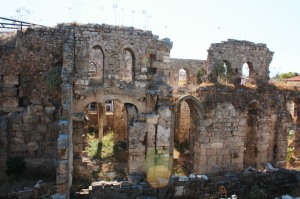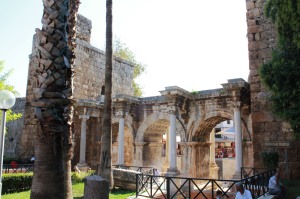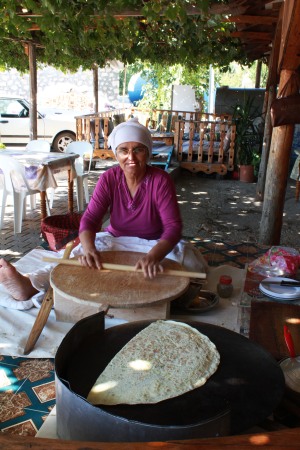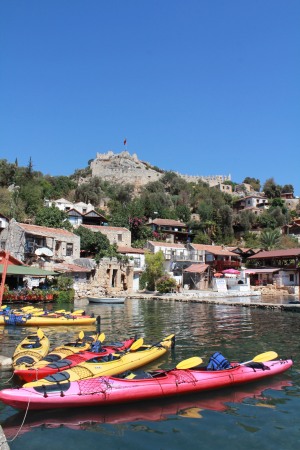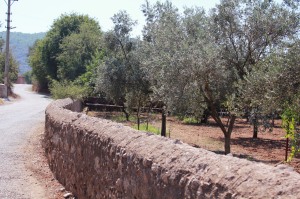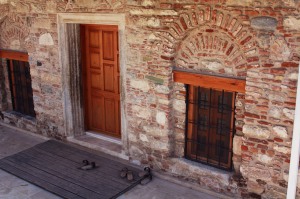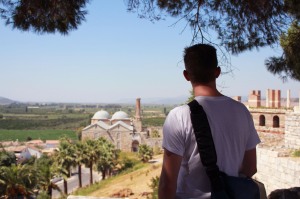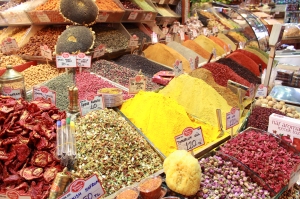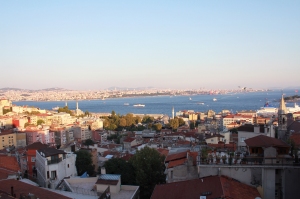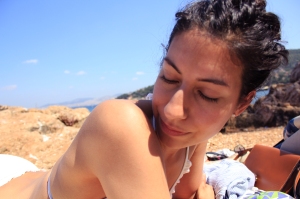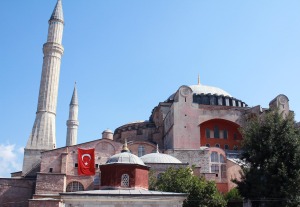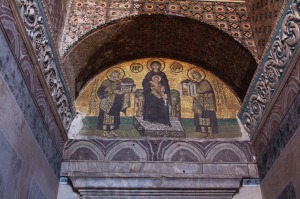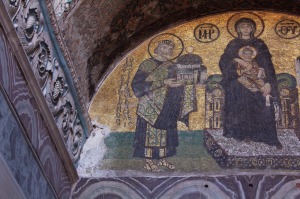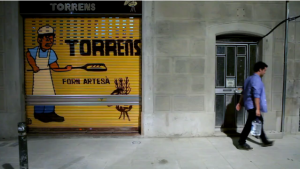
Two weeks, 1071 kilometers (665 miles), and 11 cities. Our trip down the west coast of Turkey, starting in Istanbul and ending in Antalya, was simply wonderful. We explored the metropolis of Istanbul, roamed the island of Büyükada, visited the ancient ruins of Ephesus, swam in the Aegean and Mediterranean Seas, kayaked above the sunken city of Simena, and climbed a hill to walk among the sarcophagi of a necropolis.
We became experts at finding secluded beaches and never let the heat, which averaged around 35° C/95° F, deter us from exploring. I came to admire Marcus’ exceptional navigational skills and his ability to be invited to sit down and share a meal with a stranger. I consumed my fill of fruit for the next year and passed as being Turkish, thanks to my great pronunciation of merhaba (hello) and my universally accepted curly, black hair and dark skin.
While I am still sorting through all the photos and typing out my journal, here is a taste of what I saw and ate during my travels. Above, colorful flowers hang above an empty street in the 400-inhabitant village of Kekova.

Exploring the ruins of the ancient city of Ephesus.

Driving along the coast and stopping to admire the turquoise waters of Fethiye.

We started each morning with a Turkish breakfast. Freshly-squeezed orange juice, Turkish coffee, cheese, olives, vegetables, bread and jam, pine honey, and always a plate of fruit.
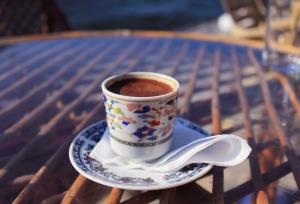
Turkish coffee in Istanbul. Strong and delicious.

I ate dozens of figs during our trip. Some we bought at outdoor markets and others were given to us, freshly plucked from the tree. When we arrived in Kekova, I was standing on the street and looking at the scene when a man walked by with a crate full of figs. As I stared in wonder, he stopped and asked if I would like one. Yes, please.

We traveled on planes, trains, boats, buses, but our favorite form of transportation was an open-top Jeep. The wind was great and it gave us the freedom to explore on rough roads and pick up hitchhiking grannies. I was always in the sun and had to wear a scarf around me to protect my skin.

The call to prayer coming from the minarets was always striking. Waking up to it at 4am was actually quite beautiful. A song in the night and then back to sleep.

In lieu of many vegetarian options, I ate a lot of fish.

The sleepy village of Kayaköy, which we visited on a Sunday afternoon. One delicious meal and a hike up a hill to see the ruined city. Exploring the Turkish countryside let us really appreciate the mountainous, dry landscape of the southern coast and its abundance of farm animals wandering around.


























































